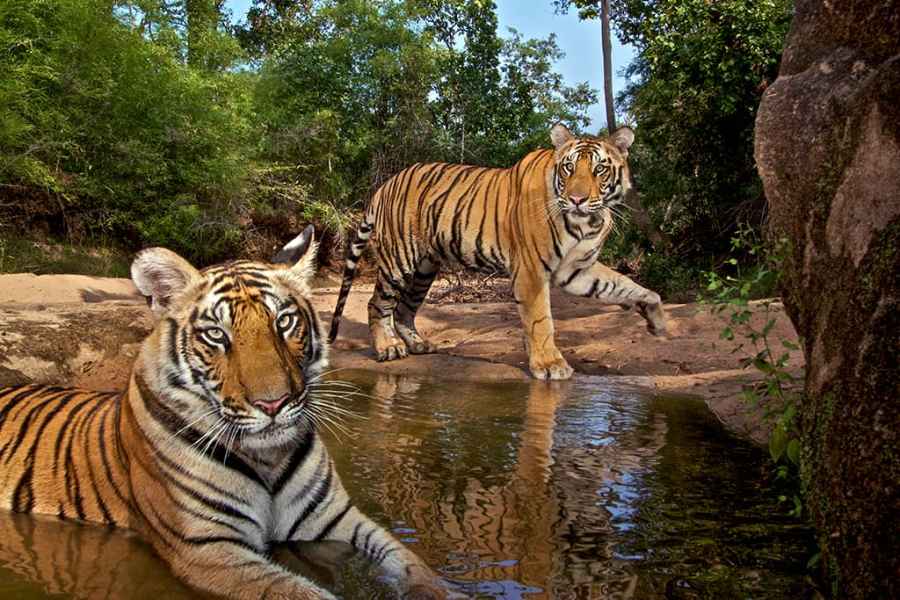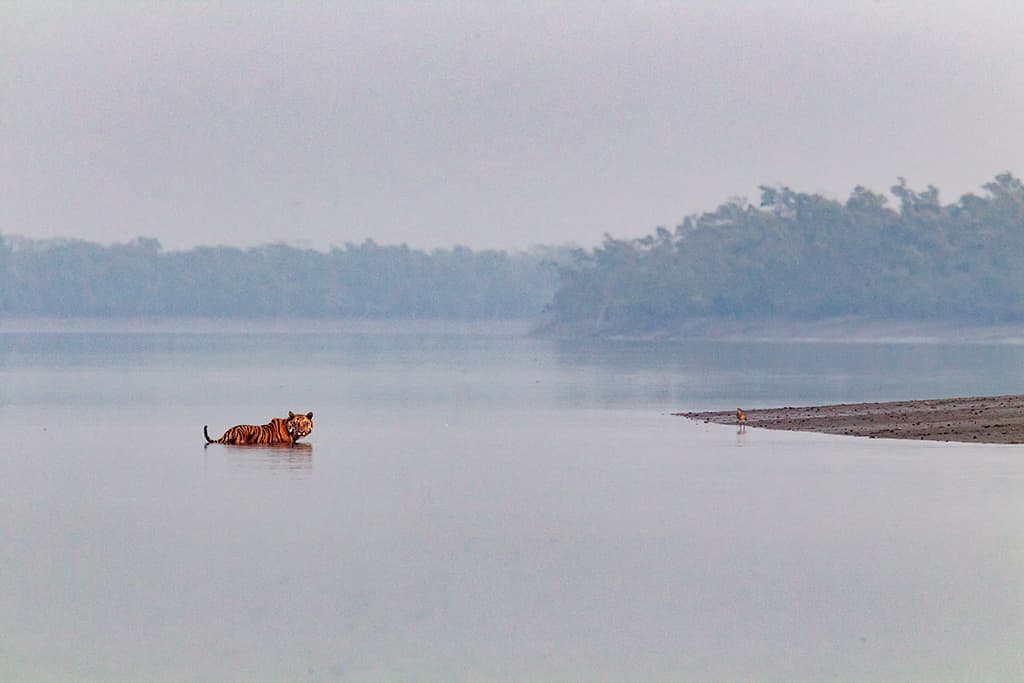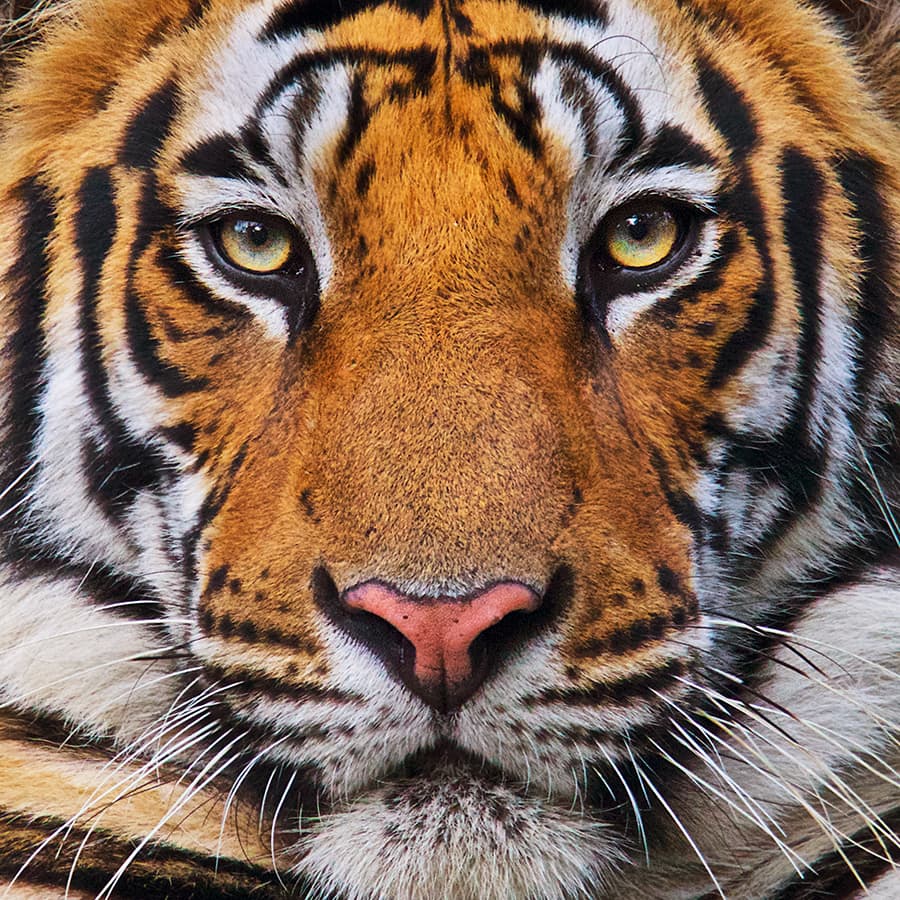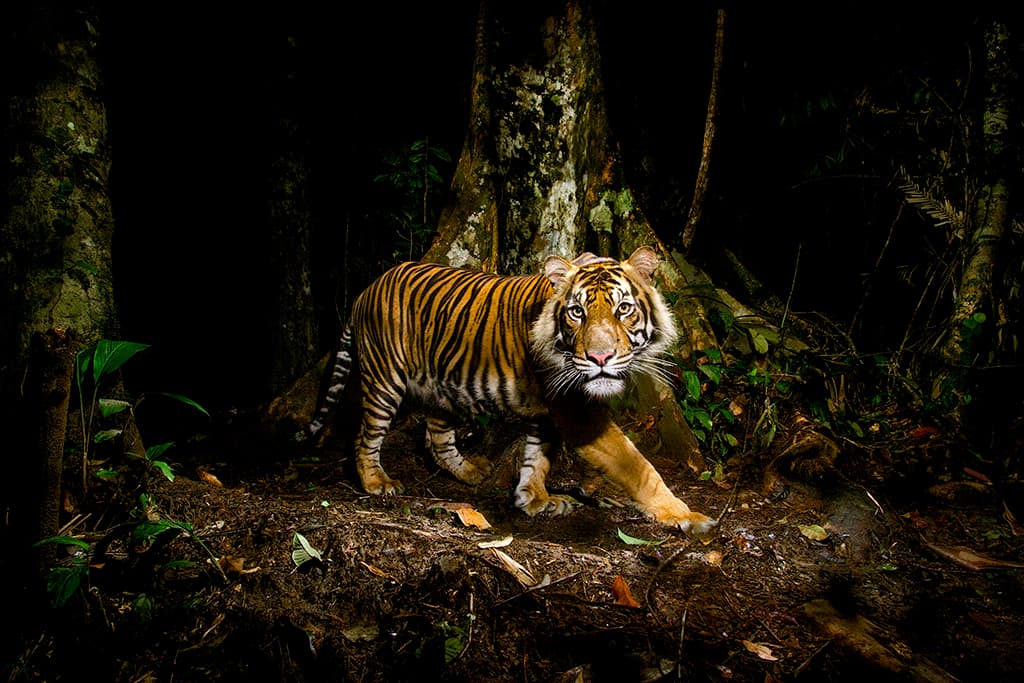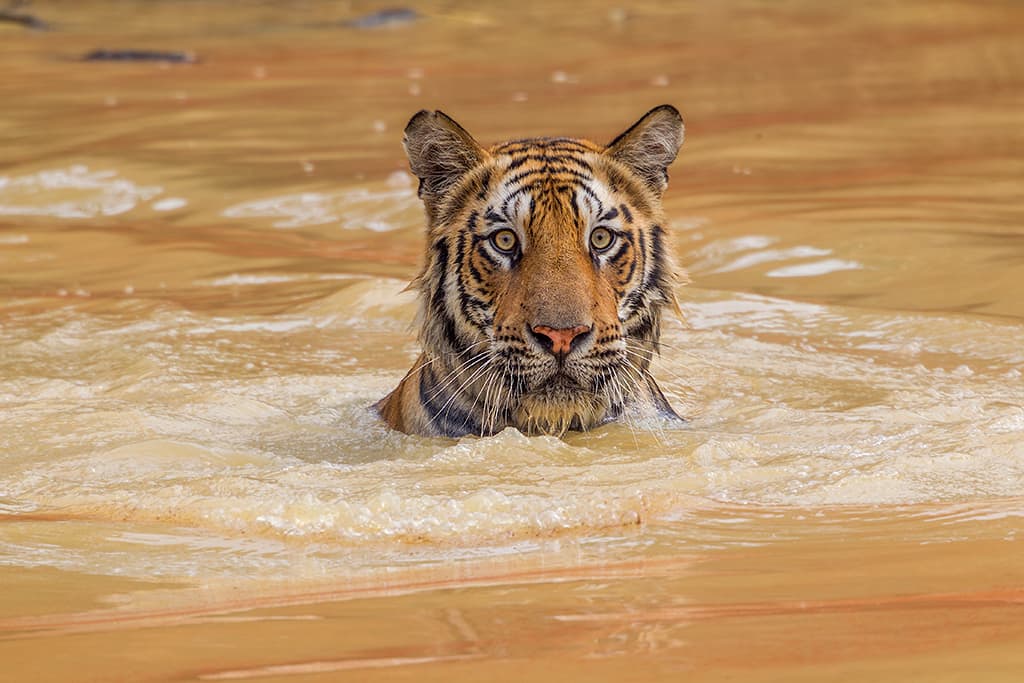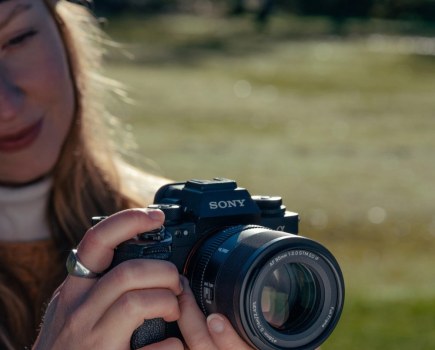A childhood ambition to work for National Geographic spurred the wildlife photographer Steve Winter to achieve just that. Amy Davies spoke to him about his career – and the expertise he’ll be bringing to an upcoming tour he’ll be leading with AP and Zoom Tours
Not many people can say they’ve managed to live out their childhood dream, but then again, not many people are Steve Winter. Earlier this year, I was fortunate enough to speak to Steve from his home in New Jersey, where, thanks to Covid-19, he’s spent much of the past couple of years – rather than out in the field he loves so much.
This early ambition, he believes, shaped him as a photographer. ‘I had this kind of singular vision when I was younger, daydreaming as a young boy about walking down dusty roads and meeting people from exotic cultures, I just wanted to be there,’ he explains.
‘Seeing the same kind of powerful imagery on the nightly news really made an impact on me too – even though I was only eight or nine years old. Those photographs, they had the power to change. As I got older, and had to figure out something to be, the only thing I knew how to do was to take pictures, so eventually it became the driving force.’
To help realise his ambition, Steve attended art school in San Francisco and went on to assist the legendary Michael ‘Nick’ Nichols, who himself went on to become a National Geographic photographer. Steve later moved to Hoboken, New Jersey (where he still lives now) to be close to the Manhattan offices of publications such as GEO, Stern, and of course the hallowed National Geographic.
His lucky break came when Nick Nichols wasn’t available to shoot a story for the National Geographic Kids magazine – Steve’s name was suggested instead and his career in earnest – and his association with the hugely respected title – started from there. Since then, he’s taken home some of the biggest accolades in photography, including Wildlife Photographer of the Year, Wildlife Photojournalist of the Year, and category prizes from World Press Photo.
He’s appeared on just about every major news outlet and his book, Tigers Forever: Saving the World’s Most Endangered Cat, was published in 2013. It is the big cat that Steve’s name has become most associated with. I was keen to find out more about why that was. He explained that it was a personal encounter with one specific cat that led him down this particular path.
‘After spending all day in a hide photographing the cats all nested in a tree, I was walking back to my shack and the hair on the back of my neck and my arms all stood up, like something was following me. I turned around, but nothing was there. Another night, I got back and I was in bed reading when I heard the stairs creaking, then the floorboards creaking. I felt sure somebody was coming to kill me. Two seconds later I hear a scratching under the door, then a sniffing.

Photographing tigers is challenging in a number of different ways – capturing them while moving is particularly difficult
I whistled, and I heard an animal go front paws, back paws down those stairs. Three weeks later, I think the same cat came to visit me, but I had marked my territory all around my hide. The cat hit the scent, climbed a tree and went across branches. I was standing there just staring at this black panther – from that I did the first ever jaguar story for National Geographic.’
Having a specialism has been a good thing for Steve. ‘When I’ve had colleagues working on three, four or even five stories at once, I would only be doing one story – each would take about two years to do. Financially, it might not have been the best thing, but I feel like it was kind of my destiny – people always ask why I chose big cats, but I didn’t – the cat chose me.’
Steve’s Zoom Photo Tours (in collaboration with AP) shares the same name as his book, Tigers Forever. It’s bound to be one of the most popular tours, with the ten-day trip to India taking place in April 2023. The expertise that Steve brings with him to the participants is priceless – but Steve is also looking forward to learning from the attendees too.
‘Sometimes I’ll be there for six months and not have thought of photographing the tigers in this particular way – so for me it’s exciting. You’re going to end up seeing one of the most majestic animals that have ever walked the face of our Earth, and it’s one of the most unique experiences that we could all have.
‘When you first go there and see this, it will take your breath away. Every day we’ll be out there from dawn to dusk looking for tigers in these incredible forests – it is The Jungle Book.’ You may be thinking that there is commonality in approach when photographing different types of big cat. Steve says otherwise.
‘Tigers aren’t as easy to see, and when you do see them, there may be a lot of other people seeing them also. Tigers are a singular animal – instead of seeing a whole group of lions, you generally see one, or you might see two or three sub-adults that are hanging out in groups. Looking into the eyes of a tiger kind of does something to you emotionally, inside.
Having just one tiger potentially gives you compositional issues, which goes back to this idea of me learning from others – everybody sees differently, we all have a unique vision. ‘You also have to be hyper-aware when you’re on one of these trips. You might see a tiger walk out of
the forest and you have to be ready.
Something might happen that you’ve never seen before. Every time one of those things happens, if I don’t get a good shot, I used to feel like “let’s see what happens next time” – eventually, I realised – there is no next time!’ It’s important for Steve that his photography has a powerful message.
Commercially, of course it makes sense for his stories to have impact, but beyond that, the positive that can come from the power of photography is clearly of utmost importance to him. In Brazil, he worked with a scientist to get a GPS collar study of jaguars in motion, proving that the animals weren’t responsible for extensive cattle deaths that were seeing jaguars hunted and poached.
‘Now, that area is where everyone goes to see jaguars, because of the three pictures I got from that area, for the first story. ‘I think what we can do as photographers and storytellers is just do our job. It’s things like giving the Thai government enough information to go in and confiscate all 167 tigers from the Thai Tiger Temple and close it down.
That was a great win for us. It wasn’t advocacy journalism as such, it was just showing through her [his partner Sharon Guynup, with whom he works extensively] words and my pictures what’s going on. The last story we did in National Geographic on US tigers, a member of Congress got a copy of the issue which had a 30-page story which highlighted the fact that there are more tigers in the US than there are left in the world.
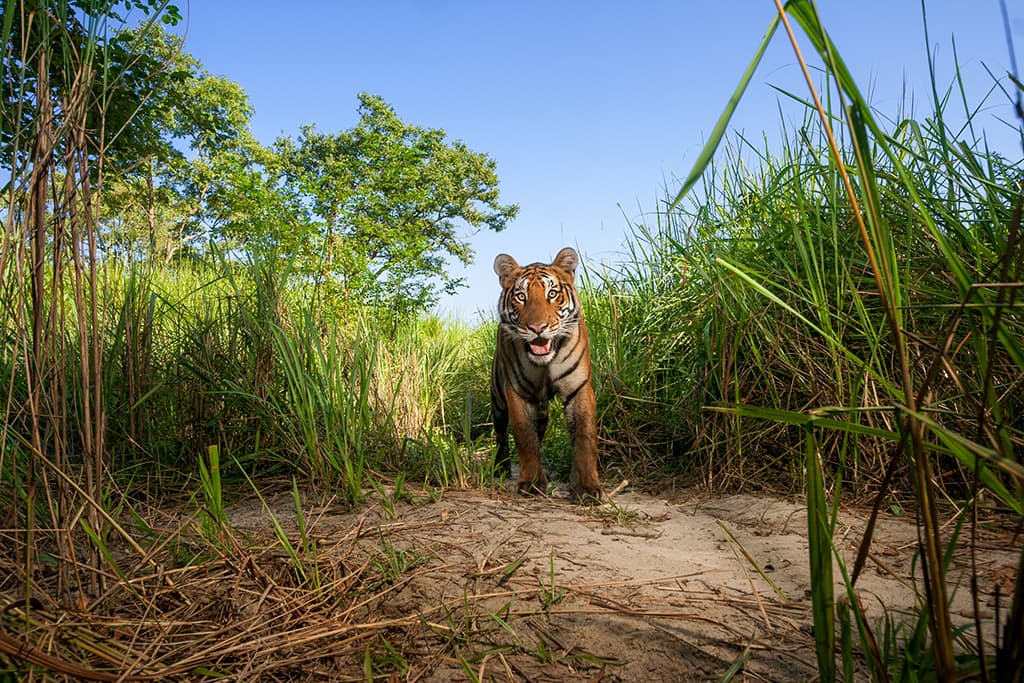
Steve believes that an important part of his work is in helping to conserve endangered species such as tigers
Now there is a law that has been passed by the House and is now going to the Senate – the Big Cat Safety Act. We’re not advocating for it, but we’re giving enough information so they can make an educated decision. Tigers belong in the wild, so we do what we can do.’
Over the years, technology has improved hugely for wildlife photographers. Camera traps in particular have come on a long way in recent years, with Steve suggesting that improvements in wireless capabilities are particularly useful. Some of the pictures that he’s been able to get simply wouldn’t have been possible in previous years. Most of the time, however, he’s using conventional cameras – and has recently been drawn towards mirrorless models.
A life-long Canon shooter, he jokes that he’d probably need the help of Canon ‘after sitting at home for over a year not being able to bring in an income’, thanks to Covid, in order to make the switch from his DSLRs. It’s the idea of silent shooting that primarily appeals: ‘You don’t think that the click, click, click of a camera is going to be a problem until you use it and you see a reaction coming from the species you’re photographing.
They can already smell us, they already know we’re there, but if we could at least take away the noise that disturbs them, that would be a real benefit.’ Over the various lockdowns, unable to carry out his usual travel and commissions, Steve has taken the opportunity to offer mentorship to up-and-coming photographers, using the same techniques he followed at the beginning of his career.
As he explains, ‘I’ve taken natural history photographers and done something with them that at first they found horrific. I started schooling them in the masters of photojournalism. But before even that I had them look at the masters of painting – because it’s always about composition. If you look at a painting, look at how the painter composed that image – they didn’t take the canvas and cut it down like you might crop an image, the canvas is the canvas.
‘Then we’d move on to the photojournalists. Wildlife photographers will ask me, why are we looking at this kind of work. But for me, it’s about capturing that moment, that emotion that comes from the image, to the viewer. That’s been one of the best things about the pandemic – I’ve taken young natural history photographers and completely changed how they photographed and looked at the world. Now when they go back into the natural world, they’re going to be looking at it in a completely different way.
‘Another thing that people don’t like is when I ask them to show me their bad pictures, or the ones they don’t really like. There’s no such thing as a bad picture, it’s just how you got to the point that you got something which you did like – I want to see that process so we can help you in your quest to find your own unique vision.’
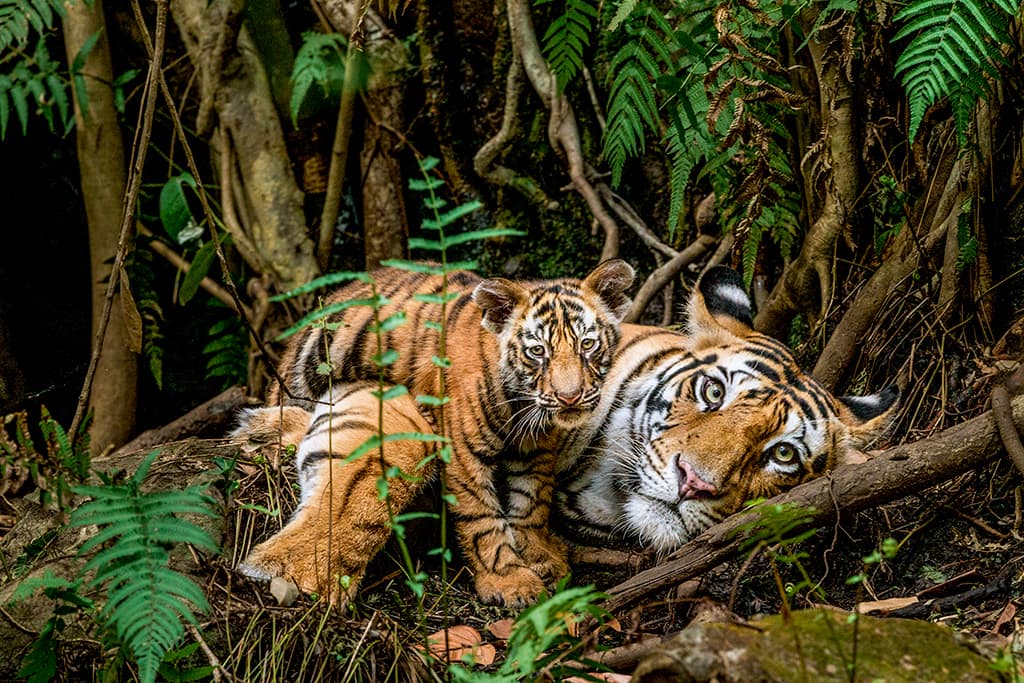
Tigers are generally solitary animals, except when they are young – spotting more than one is a rare treat
Winning awards and accolades is something that Steve is incredibly familiar with by now. But it’s not the awards themselves that mean the most to him – rather the fact that the important messages in his images reach a wider audience. The first ever prize he won – Wildlife Photographer of the Year – he didn’t even enter for himself.
‘I thought I had already won at life because I got to realise my dream of being a National Geographic photographer. I was out in the field so my partner entered for me. Winning the top prize of BBC Wildlife Photographer of the Year (which is what it was back then), means that millions more people see your images and hear the story, they read about the plight of the species that you’ve covered. Our important goal is to reach as many people as possible.
I also love being on radio and television, because you’re getting your ideas across. I go to school every time I’m on assignment because I get to learn so much about the natural world and the species I’m working with and I can use that to help teach. Last year, I was Highly Commended at WPOTY, and even from that I was interviewed so many times that I felt like I had actually won something. I got to tell the story and that’s what it’s all about.’
Steve is understandably keen to get back out there doing what he does best. Happily, there are still plenty of cat species for him to photograph, as well as other stories and issues to conquer. It’s clear he feels indebted to the natural world and is heavily committed to helping in the only way he knows how.
‘We’re inundated with people asking us for help – we have no end of work to do,’ he concludes.
To learn more about Steve Winter and his work, visit stevewinterphoto.com. Steve’s tour, Tigers Forever, also includes the Zoom 360 photo experience. When you book onto this tour you will also get two digital workshops and a physical course – three steps so that you get maximum photo time when you are out in the field. To book onto Tigers Forever, taking place in April 2023, visit zoomphototours.com/tigers.
Further reading

